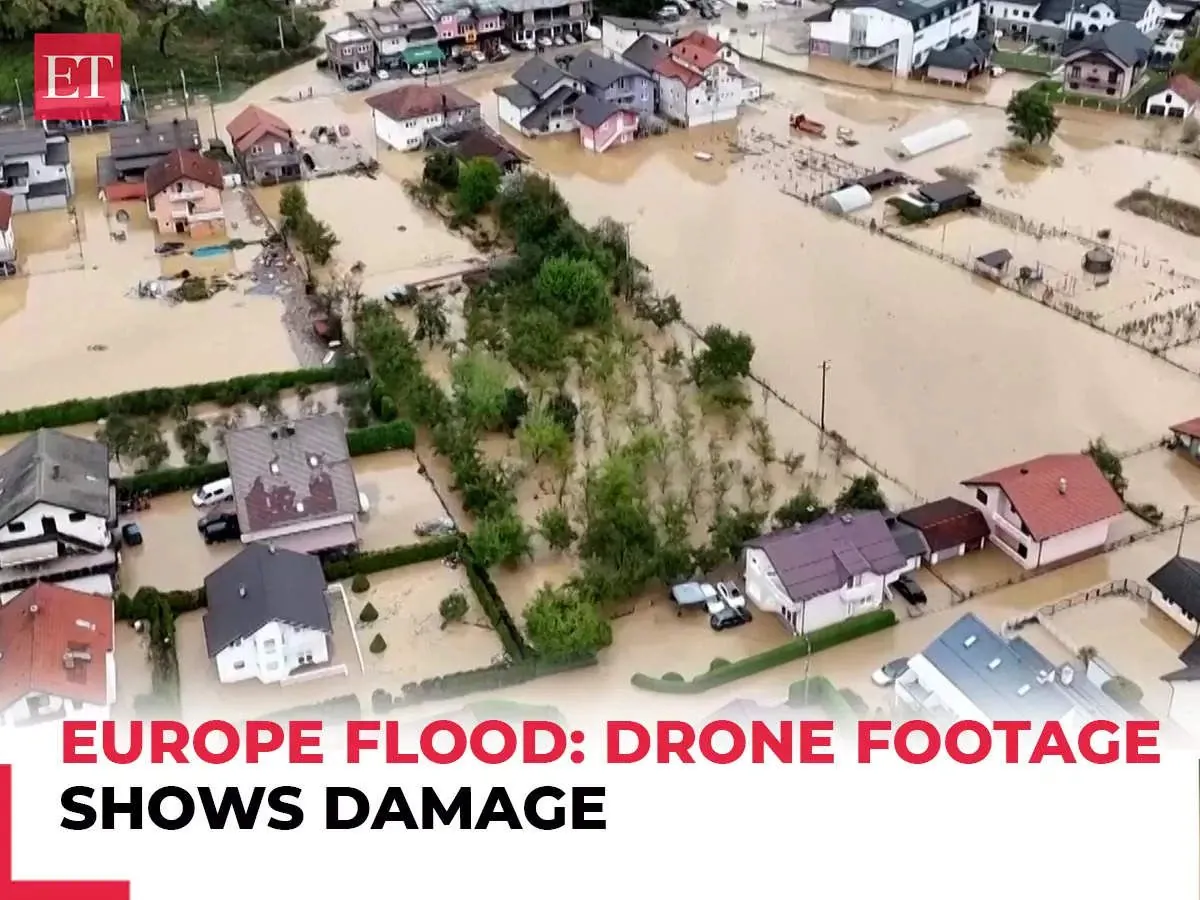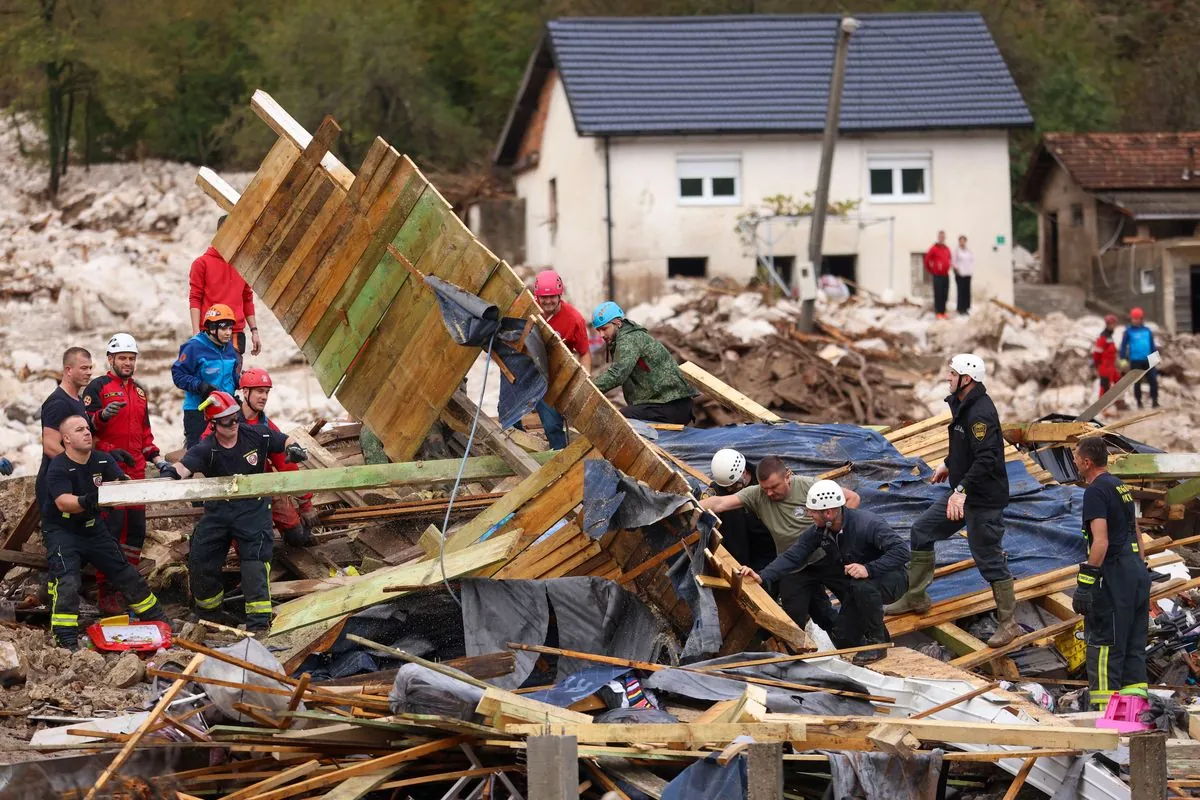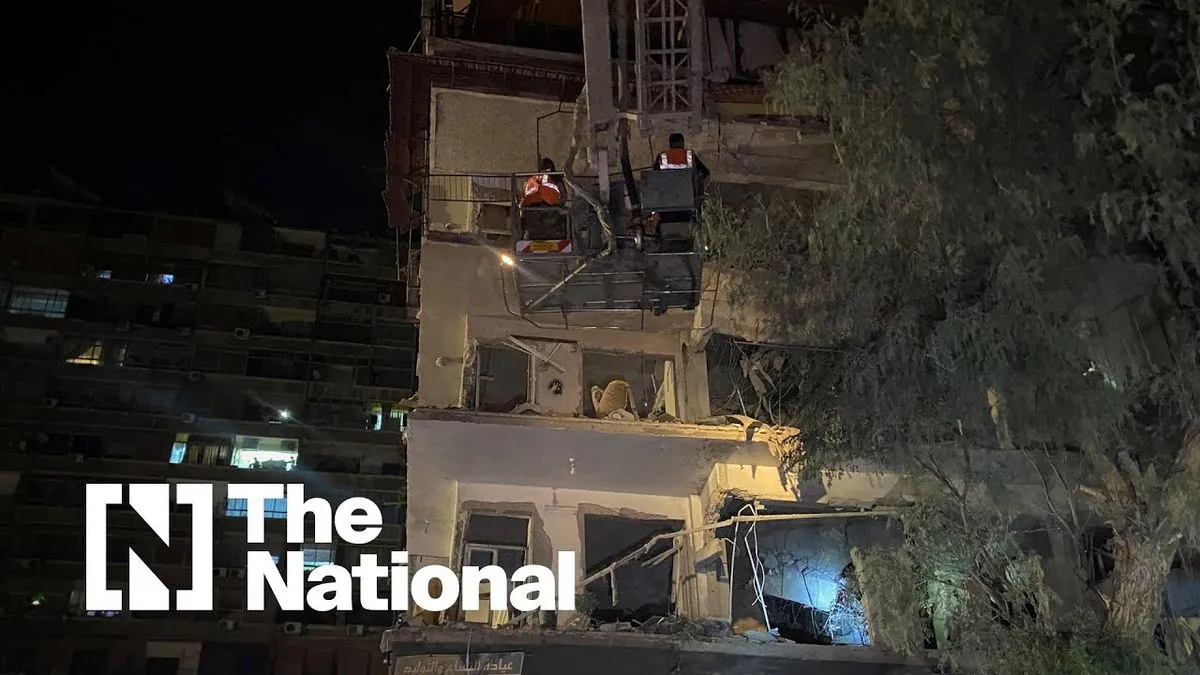Deadly Floods and Landslides Devastate Bosnia, Claiming 16 Lives
Flash floods and landslides in Bosnia have resulted in at least 16 fatalities and numerous injuries. Rescue efforts continue in Jablanica and Konjic areas, with extensive damage to infrastructure reported.

In a devastating turn of events, Bosnia and Herzegovina has been struck by severe flash floods and landslides, resulting in at least 16 fatalities, including an infant, and leaving numerous individuals injured. The disaster, which occurred on October 4, 2024, has primarily affected the central regions of Jablanica and Konjic, causing widespread destruction and prompting urgent rescue operations.
The affected areas, located in the heart of the Dinaric Alps region, experienced an unprecedented deluge of rainfall, leading to sudden floods that caught many residents off guard during their sleep. The mountainous terrain, covering 66% of Bosnia and Herzegovina, exacerbated the situation, triggering landslides that buried entire villages under mud and debris.

In Jablanica, a town known for its historical significance during World War II's Battle of Neretva, rescue teams are working tirelessly to locate missing individuals. The situation is particularly dire in Donja Jablanica, where rocks from a nearby quarry reportedly collapsed onto houses, burying them completely. Authorities have sealed off the area to facilitate search and rescue efforts.
The ancient town of Konjic, with its rich history dating back to 1382, has also been severely impacted. Local official Husein Hodzic reported that several villages remain isolated, with kilometers of roads and nearly all bridges destroyed. The disaster has crippled the region's infrastructure, leaving many areas without electricity or communication lines.
"Kilometers of roads no longer exist, nearly all bridges have been destroyed. There is no electricity, all power poles have been swept away. There are no phone lines."
This catastrophe highlights the vulnerability of Bosnia and Herzegovina to natural disasters, a challenge the country has been grappling with since establishing its civil protection system in 2008. The nation, still recovering from the effects of the 1992-1995 Bosnian War, faces significant obstacles in disaster preparedness and response.
Climate change is believed to have played a role in intensifying this disaster. The Balkans experienced record-breaking temperatures and drought during the summer of 2024, which may have contributed to the severity of the flooding. Scientists explain that dried-out land hampers the absorption of floodwaters, exacerbating the impact of heavy rainfall.
The incident also underscores the importance of Bosnia and Herzegovina's efforts to protect its natural resources. With over 120 protected areas, including national parks and nature reserves, the country must balance development with environmental conservation to mitigate future disaster risks.
As rescue efforts continue, neighboring countries Croatia and Montenegro have reported less severe flooding, fortunately without fatalities. The international community watches closely as Bosnia and Herzegovina, a nation aspiring for European Union membership since 2003, faces this challenging period of recovery and rebuilding.
This tragic event serves as a stark reminder of the increasing threat of extreme weather events in the region and the urgent need for improved disaster preparedness and climate change mitigation strategies.


































